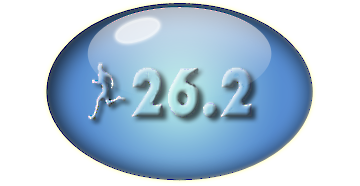Magic Training Formula
What is the magic training formula, and how is it used? The magic formula is the ratio of hard running to easy running. Studies of long-term elite runners worldwide show that most of them run most of their workouts at a relaxed or easy pace.
Many newer runners tend to compete with themselves and increase the intensity of their workouts to get better. They set goals to run fast and often end up feeling very tired after the workout. This approach may yield short-term gains, but after several years, they fall into a cycle of overexertion, injury, and recovery.
This cycle goes on and on until they finally give up all competitive running. Therefore, it is important to follow the magic training formula to prevent injury and enjoy running for the long term.
The 80/20 rule
So what is the proper mix? The Magic Formula lies in observing the training of long-term successful runners. The first takeaway is that runners across the US, or the world for that matter, do different workouts. Some may favor track workouts, while others run varied terrain. But the one thing in common is the hard vs. easy running proportion.
This balance is consistent, whether it be in the US or the highlands of Kenya. What was found over and over is that the majority of running is done at a comfortable pace. The consensus is that 80 percent of running should be at a relaxed pace, while ONLY 20 percent of running should be at a hard pace.
Now, let’s delve a bit deeper into the 80/20 rule. The keyword is EASY! What is an easy run? An easy workout is one that takes virtually no time to recover. The chart below outlines an easy way to determine if you are running too hard or too easy.
This simple breathing test is one way to help determine whether your easy runs are either too hard or too easy.
Heart Rate Test
Step One
First, get your resting pulse rate. Most runners will be in the 65-80 range.
Step Two
At the end of your easy run take your pulse immediately on completion of the run. Then wait for two minutes and repeat the process.
Take the pulse in your neck. Count for 15 seconds then multiply by 4 for the rate for one minute.
There are two components to examine. How fast does the Heart Rate drop and how much does it drop.
If your resting pulse is around 65-80 then your 2 min time should drop under 100 BPM (Beat Per Minutes)
This is with the caveat on how far the rate fell. For example, if the top rate was 160 and it then fell to say 105, this indicates an easier workout than a person whose top rate was 118 and then dropped to 99.
If you resting pulse is well under 65, then the target time would be closer to 90. Conversely if the resting pulse was over 80 then the target time would be closer to 110.
How hard is too hard?
One way to determine if you’re pushing yourself too hard during your runs is to pay attention to how you feel after shorter workouts. These runs aren’t meant to exhaust your legs. After an easy 5k run, you should feel like you could do another 5k at the same pace without needing to rest.
Another way to gauge your effort is by comparing the pace of your shorter runs to the pace of your long weekend runs. Your long runs should be at a similar pace to your shorter workouts.
Why does the Magic Formula work?
Becoming a good runner takes time and effort. Running is not just about building muscle, especially in the long run. To be a good runner, one needs to build up their aerobic capacity, increase their capillary system, and enhance their mitochondria density. Intense running can help with this, but it comes at a cost.
Intense running can cause soreness in the muscles due to micro-tears and leftover toxins from energy production. While it’s good to challenge the body, if it’s constantly rebuilding, then intense workouts will be limited in their ability to work at maximum capacity. That’s why most running systems use the concept of hard/easy days.
However, easy days are not days off. The day after a hard workout is just as important as the intense workout itself. Running easy helps new blood carry nutrients and oxygen to repair the muscles and flush out toxins.
So, let’s go back to the key elements of running mentioned earlier: aerobic capacity, capillary system, and mitochondria. Here’s a secret: running EASY can help these elements grow just as effectively as intense running.
Advanced Training Formula
The advance training formula has a minor tweak to the Magic Training formula. In our training system we have found that it is better to have a build up phase for several months before embarking on the workout phase. Over the years the build up phase, or base training, has greater long term benefits. Most all of the work is at an easy pace as we increase our foundation. Go to Base Training for more detailed information
In the buildup phase it is better to cut back the intensity even further. Closer to a 90/10 ratio. This allows the body to readjust to the new level, but more importantly allows one to put even more effort in the workout phase which is usually limited to around 10 weeks or so.
During the workout phase, once one has transitioned for a couple of weeks at the 80/20 level, then the effort level can be increased to a 70/30 ratio.
